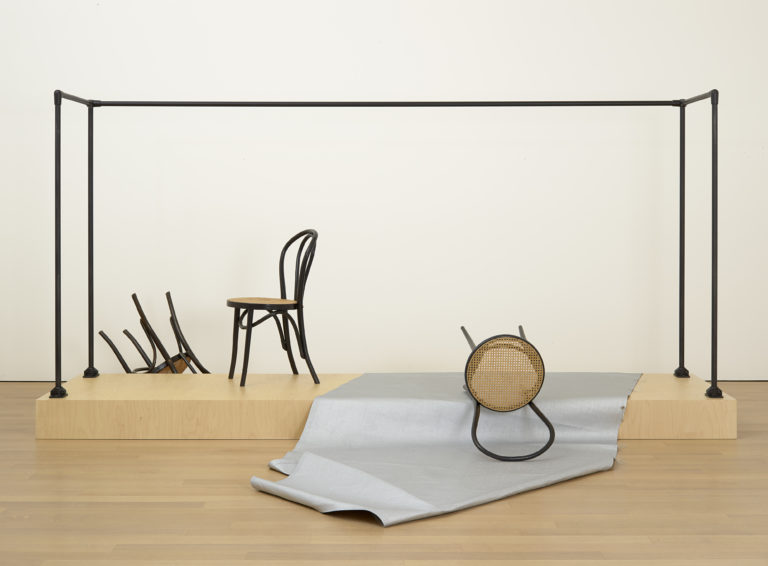Bibliography
Eugen Blume (ed.), Bruce Nauman. Live or Die, exh. cat. Berlin, Hamburger Bahnhof – Museum für Gegenwart, Cologne, DuMont, 2010.
Laurence Sillars (ed.), Bruce Nauman. Make Me – Think Me, exh. cat. Liverpool, Tate Liverpool, Londres, Tate, 2006.
Janet Kraynak (ed.), Please Pay Attention Please: Bruce Nauman’s Words, Cambridge/MA, The MIT Press, 2003.




One of Bruce Nauman’s best-known early works is a neon spiral incorporating the words The True Artist Helps the World by Revealing Mystic Truths (1967), an ambiguous, complex statement on the artist’s status and the question of truth. A number of Nauman’s works foreground sentences or wordplay in neon, sound, drawing, print and more rarely sculpture, as is the case for his first series of black granite works engraved with lettering, entitled Seven Virtues/Seven Vices (1983–4), or this work, Partial Truth.
This sculpture, a rectangular slab of black granite like the earlier series, is hand-lettered with the words ‘PARTIAL TRUTH’. It is designed to be placed directly on the floor, propped up against a wall or placed on a shelf. Nauman originally planned to use the words ‘partial truth’ in a neon work, inspired by a conversation with the gallery owner Konrad Fischer, who represented him. However, Fischer died while the work was still in the planning stage and Nauman decided to use granite in his honour. The choice of material and scriptura monumentalis lettering evoke a gravestone, giving the work the air of a funeral monument or memorial.
Alongside this granite work, Nauman produced fifty prints with the same epitaph using the same lettering for the exhibition Bruce Nauman 1985–1996: Drawings, Prints, and Related Works (Aldrich Museum of Contemporary Art, Ridgefield, 1997). The Lausanne Museum has two of these in its collection, as well as an embossed print of the sculpture. On one print the lettering is printed in reverse, multiplying the possible readings of this ‘partial truth’ in a nod to Ludwig Wittgenstein, a philosopher who had a profound influence on Nauman, and his understanding of language as a mirror held up to the world.